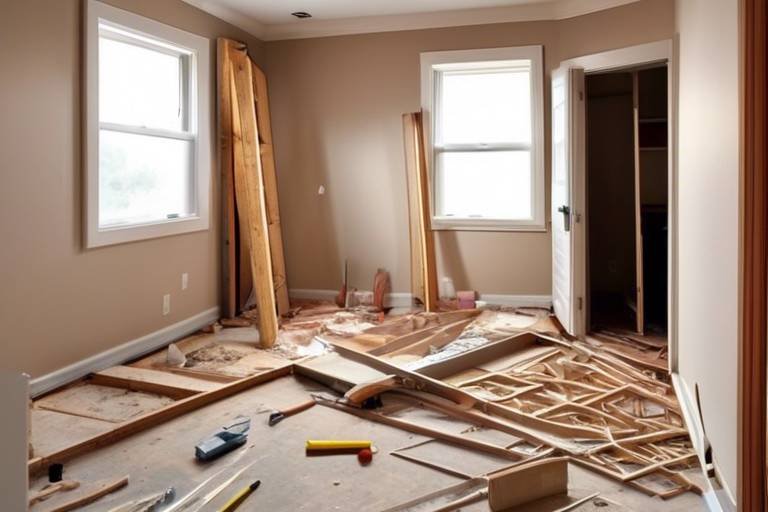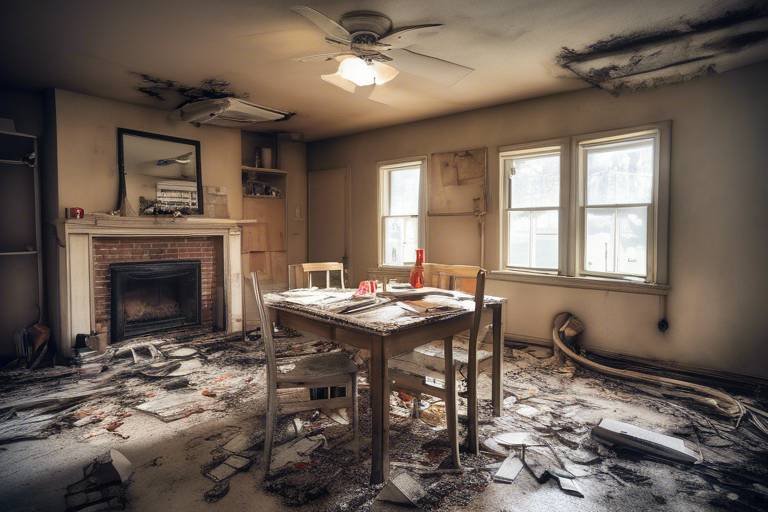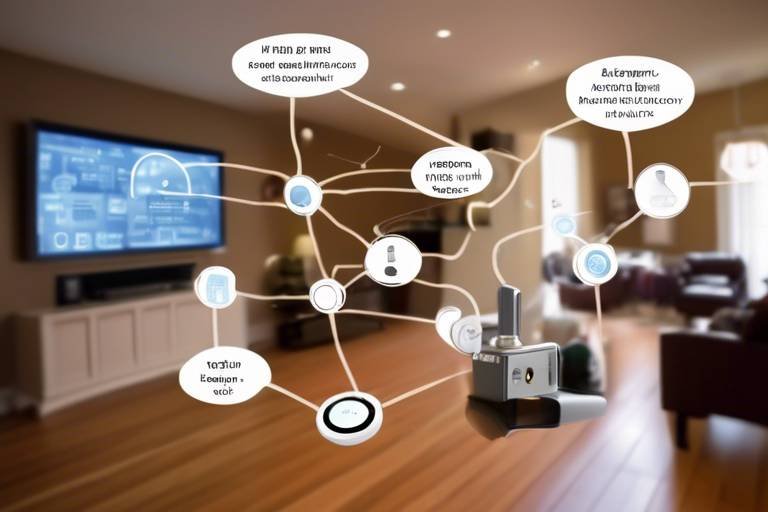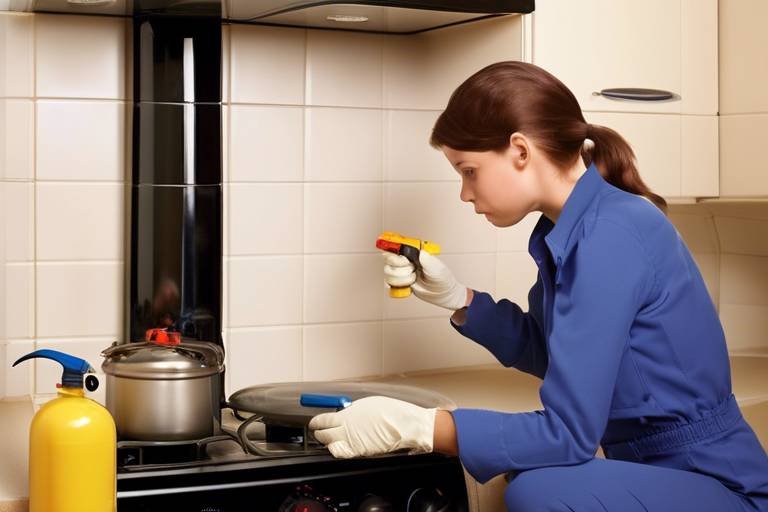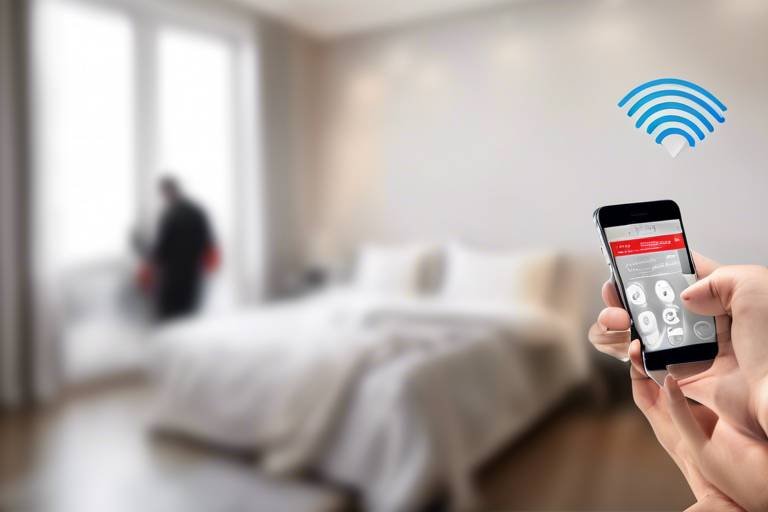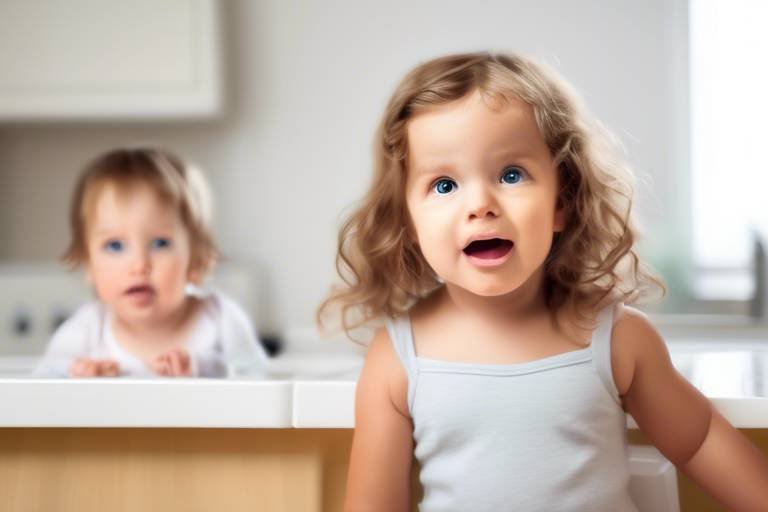Precautionary Measures for Safe Barbecues at Home
Barbecuing at home is one of life's simple pleasures, bringing friends and family together for good food and great memories. However, it's essential to prioritize safety to ensure that your barbecue experience is enjoyable and accident-free. From the moment you decide to fire up the grill to the last bite of your delicious meal, there are several precautionary measures you should keep in mind. This article will discuss essential safety tips and precautions to ensure your barbecues are not only fun but also safe for everyone involved.
First things first, the location of your barbecue is crucial. Imagine setting up your grill too close to a wooden fence or under a tree; it’s a recipe for disaster! You want to choose a spot that is not only convenient but also safe. Make sure to set up your barbecue away from flammable materials such as dry leaves, paper, or even your patio furniture. A good rule of thumb is to keep the grill at least 10 feet away from your home and any other structures. Additionally, ensure that the area is well-ventilated to prevent smoke inhalation, which can be harmful. If you're using a charcoal grill, try to position it in an open space where smoke can disperse easily.
Before you even think about cooking, it’s vital to inspect your barbecue equipment thoroughly. Just like you wouldn’t drive a car without checking the brakes, you shouldn’t fire up your grill without ensuring it’s safe to use. Regularly checking your barbecue can prevent malfunctions that could lead to accidents. Look for signs of gas leaks by applying soapy water to the connections; if you see bubbles, it’s time to fix that leak! Also, keep an eye out for rust and worn-out parts. A quick inspection can save you from a potential disaster and ensure a smooth cooking experience.
Gas grills require special attention, as they can be particularly dangerous if not handled correctly. Always check for leaks before use—this is not just a suggestion; it’s a must! Make sure all connections are tight and secure. If you ever smell gas while cooking, turn off the grill immediately and ventilate the area. It’s also wise to keep the grill lid open while igniting it to prevent gas buildup, which can lead to dangerous flare-ups.
Handling propane tanks safely is essential. Always store them upright and away from heat sources. You wouldn’t want to risk an explosion just because a tank was left in the sun! Ensure that the tank is properly secured to prevent it from tipping over. Regularly check for any signs of wear and tear, and if you notice any damage, replace the tank immediately. Remember, safety first!
When using charcoal grills, be mindful of how you light them. Avoid using flammable liquids like gasoline or lighter fluid, as these can cause sudden flare-ups or even explosions. Instead, opt for appropriate starters, such as chimney starters or natural fire starters, which are much safer alternatives. Once lit, never leave your grill unattended, as this can lead to unexpected accidents.
Implementing fire safety measures during barbecues can be your best defense against accidents. Always keep a fire extinguisher nearby and ensure everyone knows how to use it. It’s also a good idea to have a bucket of water or sand close at hand for emergencies. If the flames get too high or if something catches fire, don’t panic—just act quickly and calmly. Remember, a little preparation goes a long way in preventing a small flare-up from becoming a full-blown disaster.
Now that we’ve covered equipment and fire safety, let’s talk about food safety. Proper food handling is crucial to prevent foodborne illnesses, which can ruin your barbecue fun. Always store ingredients correctly—keep raw meats separate from other foods to avoid cross-contamination. Make sure to refrigerate any ingredients that need it, especially if you’re marinating them. It’s better to be safe than sorry!
When it comes to marinating food, do it safely. Always refrigerate marinated items and keep raw and cooked foods separate. If you’ve marinated meat, don’t use the same marinade as a sauce unless it’s been cooked. Cross-contamination can lead to serious health risks, so be vigilant!
Understanding cooking temperatures is vital for food safety. Use a meat thermometer to check that meats reach safe internal temperatures before serving. For instance, chicken should be cooked to an internal temperature of 165°F (75°C), while ground meats should reach at least 160°F (71°C). This simple step can help ensure that your delicious barbecue doesn’t turn into a food safety nightmare.
- What should I do if my grill catches fire? Quickly turn off the gas or remove the charcoal, and use a fire extinguisher if necessary.
- How can I tell if my propane tank is empty? Weigh the tank; if it feels light, it may be time to replace it.
- What is the best way to store leftover food? Store leftovers in airtight containers and refrigerate them promptly.

Choosing the Right Location
When it comes to hosting a barbecue, the location you choose can make all the difference between a fun, relaxing gathering and a potential disaster. Imagine this: you’ve set up your grill, the sun is shining, and the smell of marinated chicken fills the air. But wait! You’re just a few feet away from a pile of dry leaves or your neighbor's fence. Yikes! This is why selecting a safe area for your barbecue is crucial. You want to ensure your grilling experience is not only enjoyable but also accident-free.
First and foremost, you need to think about flammable materials. Ideally, your barbecue should be at least 10 feet away from anything that can catch fire, such as wooden decks, patio furniture, or even overhanging tree branches. Just like you wouldn’t light a match in a crowded room, you want to give your grill some space to breathe. Additionally, ensure that the area is well-ventilated. This is especially important if you’re using a gas grill, as proper airflow helps prevent the buildup of harmful gases. A good rule of thumb is to set up in an open space where smoke can dissipate easily, keeping both you and your guests safe.
Another factor to consider is the ground surface. Setting up your grill on a stable, flat surface is essential to prevent it from tipping over. Grass can be uneven, and gravel can shift underfoot, so think about using a concrete patio or a dedicated grilling area. For those who love the aesthetics of a backyard barbecue, consider placing a decorative mat underneath the grill to catch any drips and make cleanup easier. Plus, it adds a touch of flair to your setup!
Lastly, think about the proximity to your home. While you want to be close enough to access your kitchen for additional supplies, you don’t want the grill too close to your home. If something goes awry, having a bit of distance can help prevent accidents from spreading. A good distance of about 10 to 15 feet is generally safe. This way, you can enjoy the company of your friends and family without the worry of flames licking at your back door.
In summary, choosing the right location for your barbecue involves considering several factors:
- Distance from flammable materials
- Ventilation for smoke dispersion
- Stable and flat ground surface
- Proximity to your home for safety
By keeping these tips in mind, you can create a safe and inviting space for your next barbecue, ensuring that the only thing sizzling is your delicious food!

Equipment Inspection
When it comes to barbecuing, ensuring that your equipment is in tip-top shape is not just a good idea; it’s a necessity. Imagine this: you’ve gathered your friends and family, the grill is fired up, and suddenly, you’re faced with a gas leak or a malfunctioning grill. Not only can this ruin your barbecue, but it can also pose serious safety risks. To avoid such scenarios, make it a habit to inspect your barbecue equipment regularly before each use.
Start by checking the gas lines. If you’re using a gas grill, inspect the hoses for any cracks or signs of wear. A simple way to check for leaks is to apply a mixture of soap and water to the connections. If you see bubbles forming, you’ve got a leak that needs immediate attention. Additionally, ensure that all connections are tight to prevent any dangerous situations while cooking. It’s like tightening the screws on your favorite gadget; a little precaution goes a long way!
Next, don’t overlook the grill grates. They should be clean and free of rust. If they’re looking a bit worse for wear, consider replacing them. After all, you wouldn’t want your delicious burgers to stick to a rusty grate, would you? For charcoal grills, check the ash catcher and make sure it’s not clogged. A blocked ash catcher can lead to poor airflow and uneven cooking, which is the last thing you want when grilling up a feast.
Here’s a quick checklist to keep in mind during your equipment inspection:
- Check for gas leaks in gas grills.
- Inspect hoses for cracks or wear.
- Ensure grill grates are clean and rust-free.
- Examine the ash catcher for blockages in charcoal grills.
- Look for any signs of corrosion on the grill body.
Lastly, don’t forget about the propane tank if you’re using a gas grill. Make sure it’s stored upright and away from heat sources. It’s crucial to secure it properly to prevent any potential accidents. Think of it as securing your valuables; you wouldn’t want anything to go wrong because of a simple oversight.
By taking the time to inspect your barbecue equipment thoroughly, you’re not only ensuring a smooth cooking experience but also prioritizing safety for yourself and your guests. So the next time you fire up the grill, remember that a little diligence in equipment inspection can lead to a lot of fun and delicious food without any unexpected surprises!

Gas Grill Safety
When it comes to grilling, gas grills are a popular choice for many home cooks due to their convenience and ease of use. However, with great grilling power comes great responsibility! Ensuring your gas grill is safe to operate is crucial to prevent accidents and enjoy a delightful barbecue experience. First and foremost, always conduct a thorough inspection of your grill before each use. This means checking for any signs of wear and tear, such as rust or damaged hoses, which could lead to dangerous gas leaks.
One of the most critical steps in ensuring is to perform a leak test. You can do this by applying a mixture of soap and water to the connections and hoses while the gas is turned on. If you see bubbles forming, it’s a clear indication that there is a leak, and you should turn off the gas immediately and address the issue before proceeding. Always remember to check the connections to the propane tank as well, as a loose connection can lead to hazardous situations.
Additionally, make sure that your grill is placed in a well-ventilated area. This is essential not only for preventing smoke buildup but also for ensuring that any gas that might escape can dissipate safely into the air. Avoid grilling in enclosed spaces, such as garages or under awnings, as this can increase the risk of fire or gas inhalation. If you're grilling on a patio, make sure it’s clear of any flammable materials, such as dry leaves or furniture that could catch fire.
It’s also a good idea to have a fire extinguisher nearby when grilling. Knowing how to use it can make all the difference in an emergency. Familiarize yourself with the type of fire extinguisher that is most effective for grease and gas fires, typically a Class B extinguisher. Always keep it accessible, and encourage everyone involved in the barbecue to know its location and how to operate it.
Lastly, never leave your grill unattended while it’s in use. Just like a child, your grill needs supervision! If you need to step away for any reason, turn off the burners and the gas supply. This simple precaution can prevent accidents and ensure that your barbecue remains a fun and safe gathering for everyone involved.
In summary, practicing gas grill safety involves checking for leaks, ensuring proper ventilation, having a fire extinguisher at hand, and never leaving your grill unattended. By following these guidelines, you can enjoy your barbecues without worry and focus on what truly matters: delicious food and great company!
- How can I tell if my gas grill has a gas leak?
Perform a soap and water test on the hoses and connections. If you see bubbles forming, there is a leak.
- Is it safe to use a gas grill indoors?
No, you should never use a gas grill indoors due to the risk of gas buildup and fire hazards.
- What should I do if I smell gas while grilling?
Turn off the grill immediately, leave the area, and contact a professional to inspect the grill.

Propane Tank Handling
When it comes to barbecuing with a gas grill, handling propane tanks safely is absolutely essential. Think of the propane tank as the heart of your grilling setup; if it’s not treated with care, it can lead to dangerous situations that could ruin your barbecue and potentially cause harm. First and foremost, always store your propane tank in an upright position. This is crucial because it helps maintain the integrity of the tank and prevents any leaks. A tank lying on its side can lead to liquid propane escaping, which is a serious hazard.
Additionally, you should never store propane tanks indoors or in enclosed spaces, as this increases the risk of gas buildup, which can lead to explosions. Instead, keep your tank outside in a well-ventilated area, away from any heat sources or direct sunlight. It’s like keeping a fire extinguisher handy; you want to make sure it’s there when you need it, but you don’t want to put it in a place where it could cause trouble.
Before you start grilling, always inspect your propane tank for any signs of damage or rust. If you notice anything unusual, it’s best to consult a professional or replace the tank altogether. Remember to check the connections as well! Tighten any loose fittings, and if you suspect a leak, use a mixture of soap and water to test for bubbles. If you see any, it’s time to turn off the gas and seek help.
Here’s a quick summary of important propane tank handling tips:
- Store the tank upright and outdoors.
- Avoid keeping it near heat sources or in enclosed spaces.
- Regularly inspect for damage and rust.
- Check connections for leaks using soap and water.
By adhering to these precautions, you’ll not only ensure your safety but also enhance your overall grilling experience. Just like you wouldn’t drive a car without checking the brakes, you shouldn’t fire up your grill without ensuring your propane tank is in top condition. Keeping these tips in mind can help you enjoy a fun and safe barbecue with family and friends!
Q: How often should I check my propane tank?
A: It's a good practice to check your propane tank before every use, looking for leaks, rust, or any signs of damage.
Q: Can I store my propane tank in the garage?
A: No, propane tanks should always be stored outdoors in a well-ventilated area, away from heat sources.
Q: What should I do if I smell gas?
A: If you smell gas, immediately turn off the tank and the grill, leave the area, and contact a professional for assistance.
Q: How do I know if my propane tank is empty?
A: You can weigh the tank; a full 20-pound propane tank weighs about 37 pounds. Alternatively, you can use a hot water method by pouring hot water down the side of the tank and feeling for temperature changes.

Charcoal Grill Precautions
When it comes to grilling, charcoal grills have a charm that many enthusiasts adore. However, they also come with their own set of risks that require careful attention. First and foremost, always start your grill in a well-ventilated area. This not only helps with smoke dispersal but also minimizes the risk of inhaling harmful fumes. Imagine lighting a cozy fire in your backyard, only to be overwhelmed by smoke; that’s not the experience you want!
Next, when lighting your charcoal, it’s crucial to use appropriate starters. Avoid using flammable liquids like gasoline or lighter fluid, which can lead to dangerous flare-ups or even explosions. Instead, opt for natural fire starters or lighter cubes, which are designed for safety. Picture this: you’re ready to grill, the smell of charcoal fills the air, and suddenly, a rogue flame shoots up unexpectedly. Not the picture-perfect barbecue moment you had in mind, right?
Another important precaution is to ensure that your grill is placed on a stable, non-flammable surface. Grass, wooden decks, or other flammable materials can pose a fire hazard. Instead, consider using a concrete or stone surface. Additionally, always keep a fire extinguisher or a bucket of water nearby. This is your safety net, ready to spring into action should something go awry. It’s like having an umbrella on a sunny day—better safe than sorry!
After you’ve finished grilling, allow the coals to cool completely before disposing of them. This is often overlooked but is incredibly important. Hot coals can reignite if placed in a trash can or other combustible materials. Instead, use a metal container to safely store the ashes until they are completely cold. Think of it this way: you wouldn’t leave a lit candle unattended, so why would you leave hot coals to their own devices?
In summary, grilling with charcoal can be a delightful experience, but it’s essential to take these precautions seriously. By ensuring proper lighting methods, maintaining a safe environment, and being prepared for emergencies, you can enjoy a fun and safe barbecue with friends and family. Remember, safety first, and the delicious grilled food will follow!
- What should I use to light my charcoal grill? Always use natural fire starters or lighter cubes instead of flammable liquids.
- How do I know when the coals are ready? The coals should be covered with white ash and glowing red before you start cooking.
- Can I leave my grill unattended? It’s best to never leave your grill unattended, especially when it’s lit.
- How should I dispose of used charcoal? Allow the coals to cool completely in a metal container before disposing of them.

Fire Safety Measures
When it comes to having a barbecue, the thrill of grilling up your favorite meats and veggies can sometimes overshadow the critical aspect of fire safety. But let’s face it—nothing can ruin a fun gathering faster than an unexpected fire. So, how do we ensure that our barbecues remain enjoyable and accident-free? First and foremost, always keep a fire extinguisher within arm's reach. It’s like having a superhero on standby, ready to swoop in and save the day should things get out of hand. Make sure you know how to use it, too! A quick refresher on the PASS technique (Pull, Aim, Squeeze, Sweep) can make all the difference in an emergency.
Additionally, consider designating a fire safety zone around your barbecue area. This means keeping children and pets at a safe distance—usually at least 10 feet away. You wouldn’t want your little ones running around while you’re flipping burgers or grilling steaks, right? And speaking of distance, ensure that your grill is placed away from any flammable materials such as wooden decks, fences, or overhanging branches. Think of it as creating a safe bubble around your cooking space. A good rule of thumb is to have at least 3 feet of clearance on all sides of the grill.
Another crucial step is to keep your grill clean. Accumulated grease can become a fire hazard, so take the time to scrub down your grill after each use. It’s like giving your grill a spa day—ensuring it’s in tip-top shape for your next barbecue. If you're using a charcoal grill, be sure to properly dispose of the ashes once they’ve cooled down completely. Just tossing them into the trash can could lead to a fire, which is the last thing you want after a fun-filled day of grilling.
Lastly, always keep a watchful eye on your barbecue while it’s in use. It’s easy to get distracted by conversations or the delicious smells wafting through the air, but a moment of inattention can lead to disaster. If you need to step away, ask someone to keep an eye on things for you. Remember, barbecuing is not just about cooking; it’s about enjoying the moment while being responsible. By taking these fire safety measures seriously, you can ensure that your backyard barbecues are not only fun but also safe for everyone involved.
- What should I do if a fire starts at my barbecue?
Immediately use your fire extinguisher to put out the flames. If the fire is too large or out of control, evacuate the area and call emergency services. - How often should I check my fire extinguisher?
It's a good practice to check your fire extinguisher monthly to ensure it is charged and ready for use. - Can I use water to put out a grease fire?
No, never use water on a grease fire. Use a fire extinguisher or cover the fire with a metal lid to smother the flames.

Food Safety Practices
When it comes to barbecuing, ensuring food safety is just as crucial as perfecting your grilling technique. After all, the last thing you want is to spoil a fun gathering with foodborne illnesses. So, how can you keep your barbecue safe and enjoyable for everyone? Let's dive into some essential practices that will help you maintain a safe cooking environment.
First and foremost, proper food handling is vital. This means starting with clean ingredients. Always wash your hands before and after handling food, and make sure all utensils and surfaces are sanitized. Cross-contamination can happen in the blink of an eye, so keep raw meats separate from other foods. Imagine your juicy steak accidentally touching the salad; that’s a recipe for disaster! To avoid this, consider using different cutting boards for raw and cooked items.
Next, let's talk about marinating. Marinating can add incredible flavor to your meats, but it’s important to do it safely. Always refrigerate marinated foods and never reuse marinade that has come into contact with raw meat unless it's boiled first. This simple step can be the difference between a delicious meal and a trip to the hospital.
Now, onto cooking temperatures. Did you know that undercooked meat can harbor harmful bacteria? To ensure that your meats are cooked to a safe temperature, invest in a reliable meat thermometer. Here’s a quick reference to keep in mind:
| Type of Meat | Safe Cooking Temperature (°F) |
|---|---|
| Ground Beef | 160°F |
| Poultry (Chicken, Turkey) | 165°F |
| Pork | 145°F (with a 3-minute rest time) |
| Steaks and Roasts | 145°F (with a 3-minute rest time) |
By using a meat thermometer, you can ensure that your food is not only delicious but also safe. Remember, cooking times can vary based on the grill type, size, and thickness of the meat, so don’t rely solely on visual cues.
Lastly, let’s discuss leftovers. If you have any food left after the barbecue, it’s crucial to store it properly. Make sure to refrigerate leftovers within two hours of cooking. If the temperature is above 90°F, that time decreases to just one hour. When reheating, ensure that the food reaches at least 165°F to kill any potential bacteria. Think of your leftovers as a second chance for a delicious meal, but only if you handle them right!
In summary, practicing safe food handling, marinating correctly, monitoring cooking temperatures, and storing leftovers properly will help you enjoy a safe and delightful barbecue experience. So, the next time you fire up the grill, remember these food safety practices to keep your gathering fun and free from worries!
- What is the most important food safety practice during a barbecue? Always wash your hands and keep raw meats separate from other foods to avoid cross-contamination.
- How can I ensure my meat is cooked safely? Use a meat thermometer to check that your meat reaches the recommended internal temperatures.
- What should I do with leftovers from my barbecue? Refrigerate leftovers within two hours and reheat them to at least 165°F before consuming.

Marinating and Storage
When it comes to barbecuing, marinating your meats and vegetables not only enhances flavor but also plays a crucial role in food safety. Proper marinating and storage practices can prevent harmful bacteria from spoiling your delicious meal. So, how can you ensure that your marinated items are both tasty and safe? Let's dive into some essential tips!
First and foremost, always remember to refrigerate marinated items. Leaving them out at room temperature can lead to bacterial growth, which can cause foodborne illnesses. Ideally, marinate your food in the refrigerator for at least 30 minutes, but for optimal flavor, you might want to let it sit for several hours or even overnight. Just make sure you keep it covered!
Another important aspect is to avoid cross-contamination. This means keeping raw meats separate from cooked foods and other ingredients. For instance, if you’re using a marinade as a sauce after cooking, it’s crucial to set aside some before you put raw meat in it. This way, you won’t risk introducing any harmful bacteria into your cooked dishes. If you’re marinating in a bowl, consider using a separate container for cooked items to keep everything safe.
Additionally, let’s talk about the type of containers you should use for marinating. Glass or food-safe plastic containers are ideal, as they won’t react with the acids in your marinade. Avoid using metal containers, as they can alter the flavor of your marinade and potentially leach harmful substances into your food. If you’re using a resealable plastic bag, make sure to remove as much air as possible to allow the marinade to fully coat the food.
Here’s a quick reference table summarizing key points for marinating and storage:
| Tip | Description |
|---|---|
| Refrigerate | Always marinate in the refrigerator to prevent bacteria growth. |
| Avoid Cross-Contamination | Keep raw and cooked foods separate and use different containers. |
| Use Proper Containers | Opt for glass or food-safe plastic; avoid metal containers. |
| Time Matters | Marinate for at least 30 minutes, but longer for more flavor. |
By following these simple yet effective marinating and storage practices, you can ensure that your barbecue is not only delicious but also safe for everyone to enjoy. Now that you’re equipped with these tips, get ready to impress your friends and family with your grilling skills!
- How long can I marinate meat? - Generally, it's safe to marinate meat for up to 24 hours. However, for delicate proteins like fish, 30 minutes to 1 hour is sufficient.
- Can I reuse marinade? - No, it’s not safe to reuse marinade that has been in contact with raw meat unless it has been boiled first to kill any harmful bacteria.
- What is the best way to thaw frozen marinated meat? - The best way to thaw frozen marinated meat is in the refrigerator, allowing it to thaw slowly and safely.

Cooking Temperatures
When it comes to barbecuing, one of the most critical aspects is ensuring that the food you serve is safe to eat. This is where come into play. You might be wondering, "Why is it so important?" Well, undercooked meats can harbor harmful bacteria, leading to foodborne illnesses that can ruin your barbecue fun and even land you in the hospital. So, let's dive into the world of cooking temperatures and why they matter!
To ensure you're cooking your meats to the right temperatures, it's essential to use a reliable meat thermometer. This handy tool takes the guesswork out of cooking, allowing you to check the internal temperature of your food accurately. For instance, you wouldn't want to serve a juicy chicken breast that looks perfect on the outside but is still pink on the inside, right? That's where the thermometer saves the day!
Here’s a quick reference table for safe cooking temperatures for various types of meat:
| Type of Meat | Safe Minimum Internal Temperature |
|---|---|
| Beef (Steaks, Roasts) | 145°F (63°C) |
| Pork | 145°F (63°C) |
| Ground Meats (Beef, Pork, Lamb) | 160°F (71°C) |
| Chicken (Whole or Parts) | 165°F (74°C) |
| Turkey (Whole or Parts) | 165°F (74°C) |
| Fish | 145°F (63°C) |
As you can see from the table, different types of meat require different cooking temperatures. This is crucial because cooking meat to the correct temperature not only enhances flavor but also ensures that harmful pathogens are eliminated. Imagine biting into a delicious burger, only to discover it's not cooked enough. Yikes! That’s a recipe for disaster.
It's also essential to let your meat rest for a few minutes after cooking. This allows the juices to redistribute throughout the meat, making it more flavorful and tender. Plus, the internal temperature can rise a few degrees during this resting period, which is a little insurance policy against undercooking. So, if you're grilling a steak, take it off the heat when it reaches around 140°F (60°C) and let it rest for about 5 minutes. Trust us, your taste buds will thank you!
In summary, understanding and monitoring cooking temperatures is a vital part of the barbecue experience. Not only does it keep your guests safe, but it also ensures that every bite is delicious. So, next time you fire up the grill, keep your thermometer handy and cook with confidence!
- What is the best way to check the temperature of meat? Use a reliable meat thermometer inserted into the thickest part of the meat, avoiding bones.
- How do I know when to flip my meat on the grill? A good rule of thumb is to flip it once it easily releases from the grill grates.
- Can I use the same thermometer for different types of meat? Yes, but make sure to clean it between uses to avoid cross-contamination.
- What should I do if my meat is undercooked? Return it to the grill and cook it until it reaches the appropriate internal temperature.
Frequently Asked Questions
- What is the safest location for a barbecue?
When planning your barbecue, choose a spot that is away from flammable materials like trees, bushes, and your home. A well-ventilated area is crucial to avoid smoke inhalation and ensure a comfortable cooking experience.
- How often should I inspect my barbecue equipment?
It's wise to check your barbecue equipment before each use. Look for gas leaks, rust, and any worn-out parts. Regular inspections help prevent malfunctions and make your cooking experience smoother and safer.
- What should I do if I suspect a gas leak?
If you think there's a gas leak, turn off the gas supply immediately and move away from the grill. Do not light the grill or use any electrical devices until you have confirmed that it's safe. Contact a professional if you're unsure.
- How should I handle propane tanks?
Always store propane tanks upright and away from heat sources. Make sure they are securely fastened and never leave them in a hot car or direct sunlight to prevent pressure build-up.
- What are the best practices for lighting a charcoal grill?
Use appropriate starters specifically designed for charcoal grilling. Avoid using flammable liquids like gasoline, as they can cause dangerous flare-ups or explosions. Instead, opt for lighter fluid or a chimney starter.
- What fire safety measures should I take during a barbecue?
Keep a fire extinguisher nearby and ensure you know how to use it. It's also a good idea to have a bucket of water or sand handy for emergencies. Always stay vigilant and never leave the grill unattended while it's in use.
- How can I prevent foodborne illnesses while barbecuing?
Proper food handling is key! Always store ingredients correctly and ensure they are cooked to the right temperatures. Use separate utensils for raw and cooked foods to avoid cross-contamination.
- Is it safe to marinate food at room temperature?
No, it's not safe! Always refrigerate marinated items. Keeping them at room temperature can lead to the growth of harmful bacteria, putting you and your guests at risk.
- What cooking temperatures should I aim for?
Using a meat thermometer is the best way to ensure your meats are cooked to safe internal temperatures. For example, chicken should reach at least 165°F (75°C), while ground meats should be cooked to 160°F (70°C).




